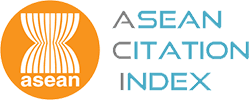Improving the quality of Self-Organizing Map by "Different elements" competitive strategy
Author affiliations
DOI:
https://doi.org/10.15625/1813-9663/31/3/6452Keywords:
Self-organizing map, competitive learning, different elements, quantization error, topographic errorAbstract
A Self-Organizing Map (SOM) has good quality when both of its measures, quantization error (QE) and topographic error (TE), are small. Many researchers have tried to reduce these measures by improving SOM's learning algorithm, however, most results only decrease either QE or TE. In this paper, a method to improve the quality of the map obtained when the SOM's learning algorithm ended is proposed. The proposed method re-adjusts weight vector of each neuron according to the cluster's center that neuron represents and optimizes clusters by "different elements'' competitive strategy. In this method, QE always decreases each time the competition "different elements'' occurs between all neurons, TE may reduce when the competition "different elements'' occurs between adjacent neighbors. The experiments are performed on assumed datasets and real data sets. As the results, the average reduction ratio of QE is from 50% to 60%, TE gets the average reduction ratio from 10% to 20%. This reduction ratio is larger than some other solutions but does not need to adjust the parameters for each specific dataset.
Metrics
Downloads
Published
How to Cite
Issue
Section
License
1. We hereby assign copyright of our article (the Work) in all forms of media, whether now known or hereafter developed, to the Journal of Computer Science and Cybernetics. We understand that the Journal of Computer Science and Cybernetics will act on my/our behalf to publish, reproduce, distribute and transmit the Work.2. This assignment of copyright to the Journal of Computer Science and Cybernetics is done so on the understanding that permission from the Journal of Computer Science and Cybernetics is not required for me/us to reproduce, republish or distribute copies of the Work in whole or in part. We will ensure that all such copies carry a notice of copyright ownership and reference to the original journal publication.
3. We warrant that the Work is our results and has not been published before in its current or a substantially similar form and is not under consideration for another publication, does not contain any unlawful statements and does not infringe any existing copyright.
4. We also warrant that We have obtained the necessary permission from the copyright holder/s to reproduce in the article any materials including tables, diagrams or photographs not owned by me/us.









